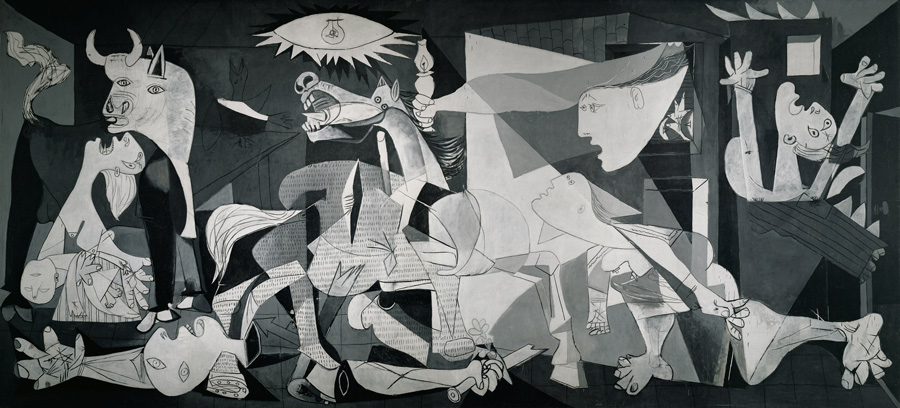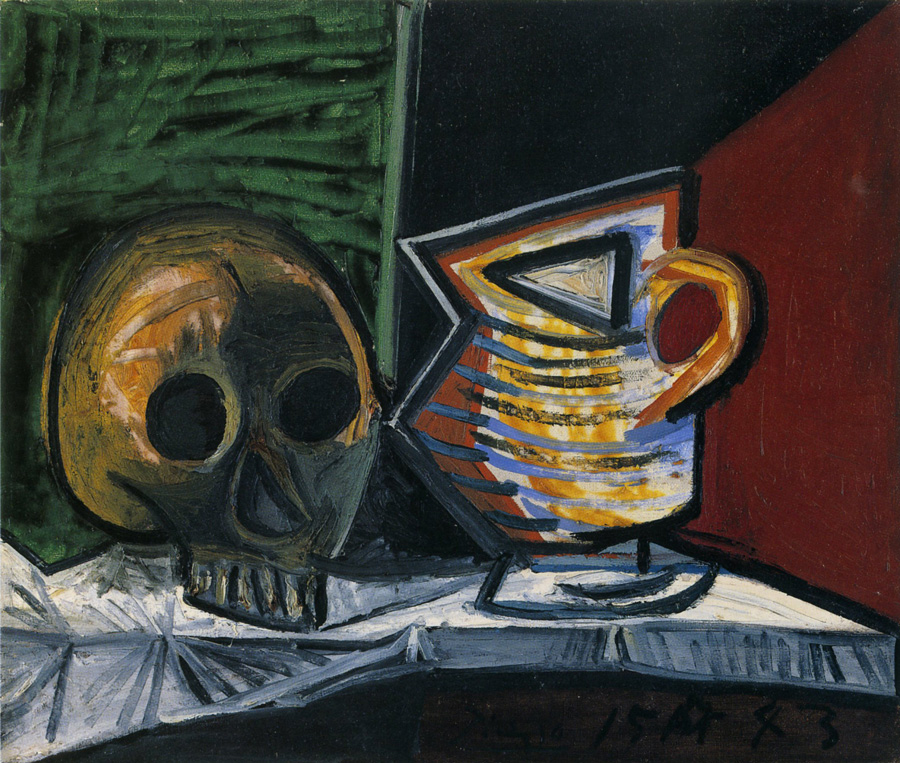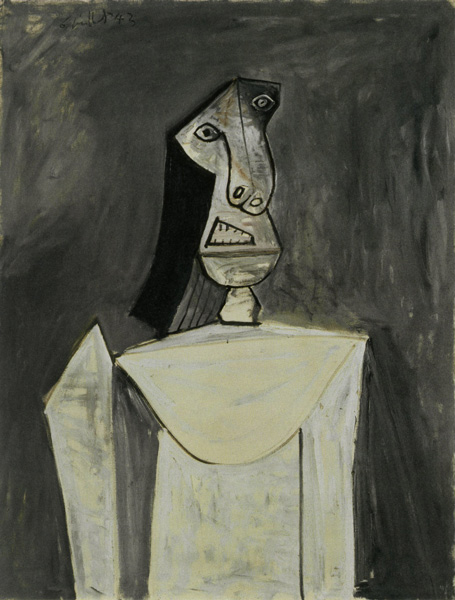Throughout the war, the artist's output never flagged, despite being hard hit by the political developments and their material consequences. Picasso actually produced over three hundred oils, five times that amount of drawings, studies, and oils on paper, and a considerable number of illustrations, such as engravings and lithographs; he also practiced sculpture, producing pieces such as the incredible Man with a Lamb in February 1943, and managed to have bronze works made from plaster casts, having the pieces delivered to the foundry by night while the Germans were requisitioning metal to make cannons. As Laurence Bertrand-Dorléac recalls, for Picasso, "to create was to resist." (cat. ex. L’Art en guerre, MAMVP, 2012, p. 128). The Spanish artist, whose application for French citizenship was denied in 1940, refused to go into exile to America or to return to Spain under Franco. He sought refuge in Royan from 1939 to 1940, and then decided to go back to Paris towards the end of 1940. He spent the years of the Occupation in his studio at rue des Grands-Augustins, where he had been working since 1936 and had completed his masterpiece Guernica in 1937; he found it simpler to stay there and give up his apartment on rue La Boétie across the Seine. As a foreigner, he had to request authorization for all his movements. During this period, Picasso was most likely spared by the Nazis thanks to the protection of the German artist Arno Breker, the official sculptor of the Reich and a friend of Jean Cocteau. However, as a leading figure in modern art, he was no less threatened by the Gestapo, and his work was not allowed to be shown, being considered "degenerate art." Françoise Gilot reports that the Germans regularly knocked at his studio's door under the pretext of looking for Lipchitz, insisting on finding out whether Picasso was Jewish, and rifling through the prevailing mess in search of papers that could have compromised him. In this hostile atmosphere, the summer of 1943 was particularly difficult: in April, the Nazis gave orders to take down one of Picasso's paintings from an exhibition at the Charpentier gallery, and in July, Rose Valland, assistant conservator at the Musée du Jeu de Paume, the place where the artworks requisitioned by the Nazis were stored, attended the burning of five hundred pieces of "degenerate" art, including several by Picasso, Léger, and Miró. Daniel-Henry Kahnweiler, the owner of the gallery that handled Picasso's work, was in hiding in the Limousin when his house was searched by the Gestapo, and he was forced to move on, this time escaping to Lot-et-Garonne. Although Kahnweiler was no longer able to work, Picasso received regular reports about him through the art dealer's sister-in-law Louise Leiris, who stayed in Paris, took over the gallery, and continued to sell paintings. In early August, the artist Chaïm Soutine died in Paris of a perforated ulcer. Picasso and Jean Cocteau braved the fear of being seen at the burial of a Russian Jew and attended the funeral at the cemetery of Montparnasse.
In this context, the artist sought refuge in art, creating still lifes with skulls in somber colors, such as Still Life with Skull and Pitcher, from August 15, 1943 (Private collection, Z. XIII, 90), and deconstructed busts of women whose faces gradually become skulls, as in the terrifying Bust of a Woman on a Grey Background dated July 6th (Nationalgalerie, Berlin, Z. XIII, 37). In his private life, Picasso was relatively isolated. The summer of 1943 marked a transition in his love life. The relationship he had begun with surrealist photographer Dora Maar in the summer of 1936 was deteriorating. Picasso, who had been drawn to the intelligence, beauty, and strong character of this young woman, could no longer bear her violent fits and her bouts of jealousy; the possessive Dora Maar had a hard time tolerating the underlying presence of Picasso's young mistress Marie-Thérèse and their daughter Maya, born in 1935. In addition, Picasso already had another muse on his mind. In May, he met Françoise Gilot at Le Catalan, a restaurant he often went to near his studio before the Nazis closed it down. The young woman, a painter herself, had already visited him several times at the Grands Augustins studio; although she had not yet fallen for the master, he was haunted by her. There is no direct testimony of this month of August 1943, but we do know that Françoise Gilot sought safety in the free zone after July and did not see Picasso again until November 1943. According to James Lord, that was when Dora Maar started having hallucinations and fell into a depression. It had been hard enough for her to withstand Picasso's double life; she collapsed at the appearance of yet another rival. Meanwhile, Picasso continued to see his daughter and Marie-Thérèse, as is apparent from a magnificent portrait of Maya in colored pencils, dated August 29, 1943 (Private collection, Z.XIII, 94.) This delicate, perfectly realistic portrait of his daughter shines like a window of light in the dark output from this period.







 Summary
Summary